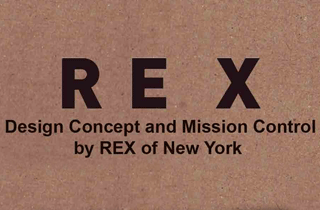SU: In your chapter dedicated to self-promotion, you touch on the celebrity issue that has surfaced. I agree that we depend on our reputations to maintain work and get new clients, but things seem to have gotten out of hand. Why have so many designers been lured by celebrity instead of simply making good work?
So, when I talk about celebrity in design, I’m not talking about the sort of celebrity that’s chronicled in the glossy magazines you buy in supermarkets. I think what I’m getting at is that when I became a designer in the mid-seventies, absolutely no thought was given to the notion of fame. Yes, there were famous designers, but they seemed like well-kept secrets; you knew their work, but not much else about them.
Today, every designer knows that they can achieve a certain sort of fame. I don’t even think there’s anything wrong with this – it might even be a useful spur to good work. But if it replaces good work as the ultimate goal of the designer, then I think it is a dangerous cul de sac. I also think that certain designers have become adept at building their own myths. I’m thinking of the way that many graphic designers who came into contact with the music business, learned how to spin their own mythologies. The downside to this is that it creates the illusion of a grime-free existence. If we only read about superstar designers gliding from one lecture theatre to the next, from one perfect job to another, then we have a distorted view of the life of a designer.
It’s one of the reasons why I made Stephan Sagmeister the ‘patron saint’ of my book, I loved the way he exposes (wittily) the myth of design celebrity in his book Made You Look. That was a great inspiration to me.
| If you do good work, you will get noticed. | ||||
| | ||||
Paradoxically, I think passion is best maintained by having an interest in the world beyond graphic design. One of the reasons why graphic designers have a poor public image is because they are often seen as only being interested in graphic design. The best graphic designers are not obsessed with graphic design to the exclusion of everything else. I also think that the best graphic designers have what I’ve called in the book ‘cultural awareness’. The thing I like best about being a designer is moving from one subject to another. But you can only do this if you have an awareness of what is going on in the world.
But by integrity I mean being honest in the way you deal with the people you inevitably, as a graphic designer, come into contact with. And I also mean believing in something. This can be an aesthetic, a political or a pragmatic belief, but you have to be prepared to stand up for something. If you don’t believe in anything, no one will believe in you.
My main reason for writing this book was my frustration with designers who say – I don’t get any good work. I wanted designers to realize that we can’t go through our working lives blaming clients and the economic climate for our poor work. We have to take responsibility for the successful outcome of a project, and to do this we have to show integrity. It’s a bit glib, but I divide designers into heroes or doormats. And the difference between heroes and doormats is usually integrity.
All images taken from How To Be a Graphic Designer Without Losing Your Soul
Adrian Shaughnessy is a self-taught graphic designer. Until recently he was creative director of Intro, the London-based design company he co-founded. He left in 2004 to pursue an interest in writing and consultancy, and is currently consultant creative director of This is Real Art, a 'virtual' design company. Shaughnessy has written three books on design for music (the Sampler series) and edited a book of Intro work. He writes for many of the leading design publications, and is a contributor to Design Observer and The Wire. He lectures extensively around the world, and in January 2006 he was appointed editor of a forthcoming magazine devoted to illustration.

























































1 comments:
I love your blog. great title on this article.
Post a Comment